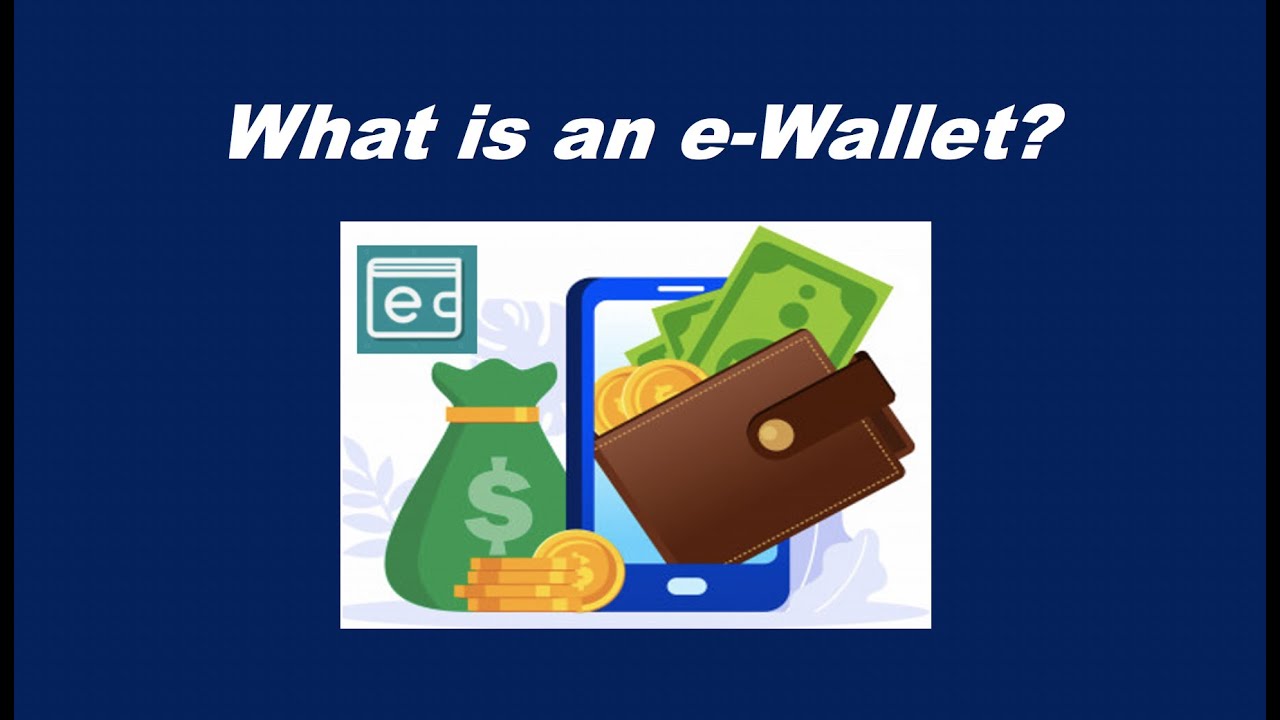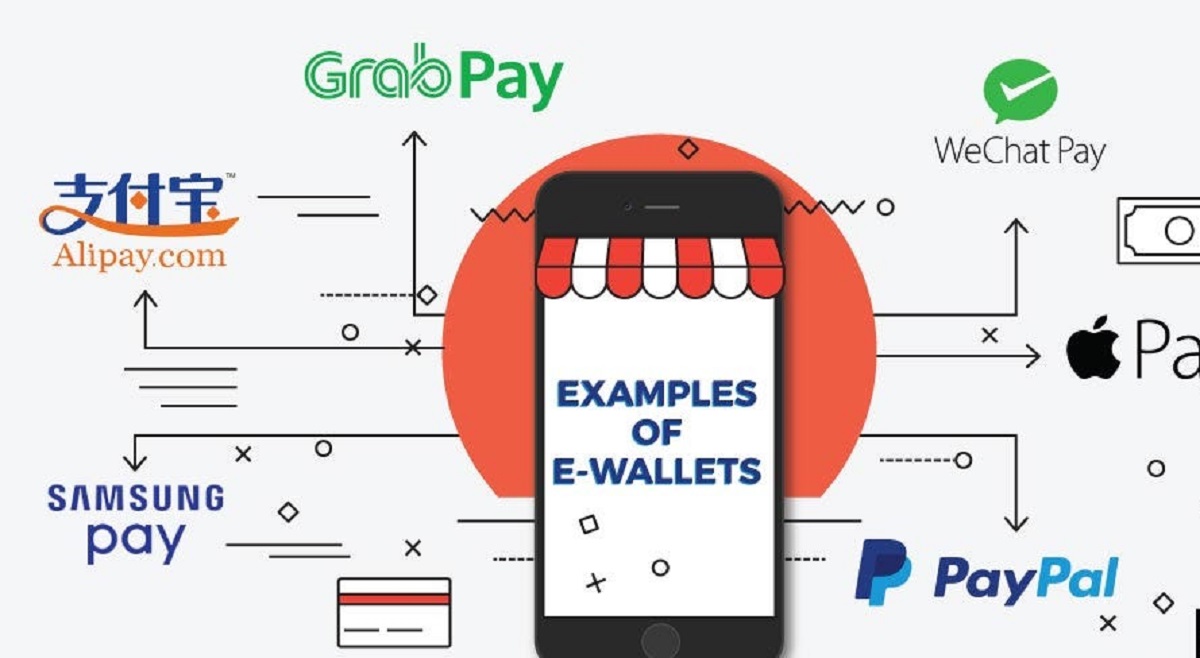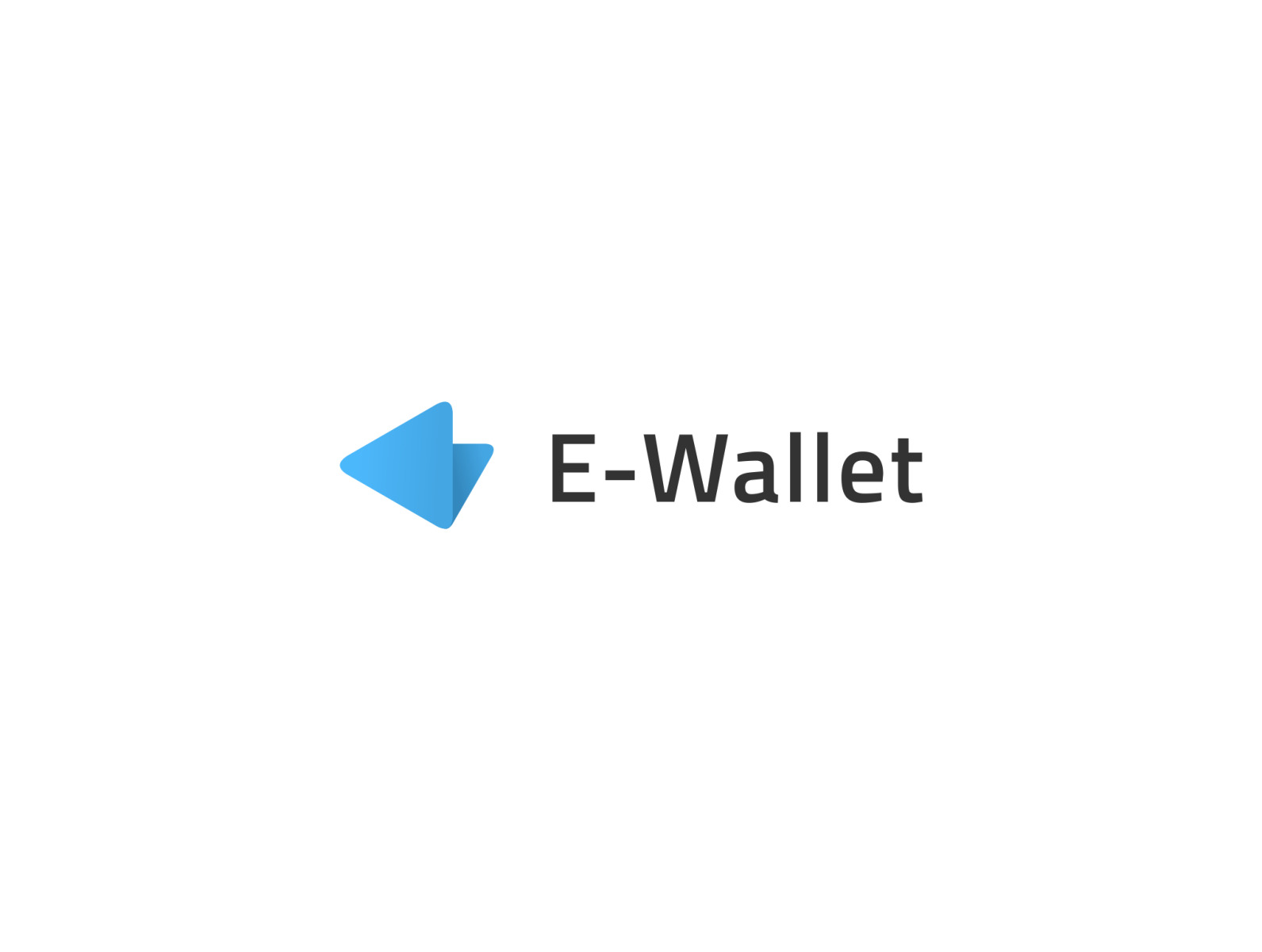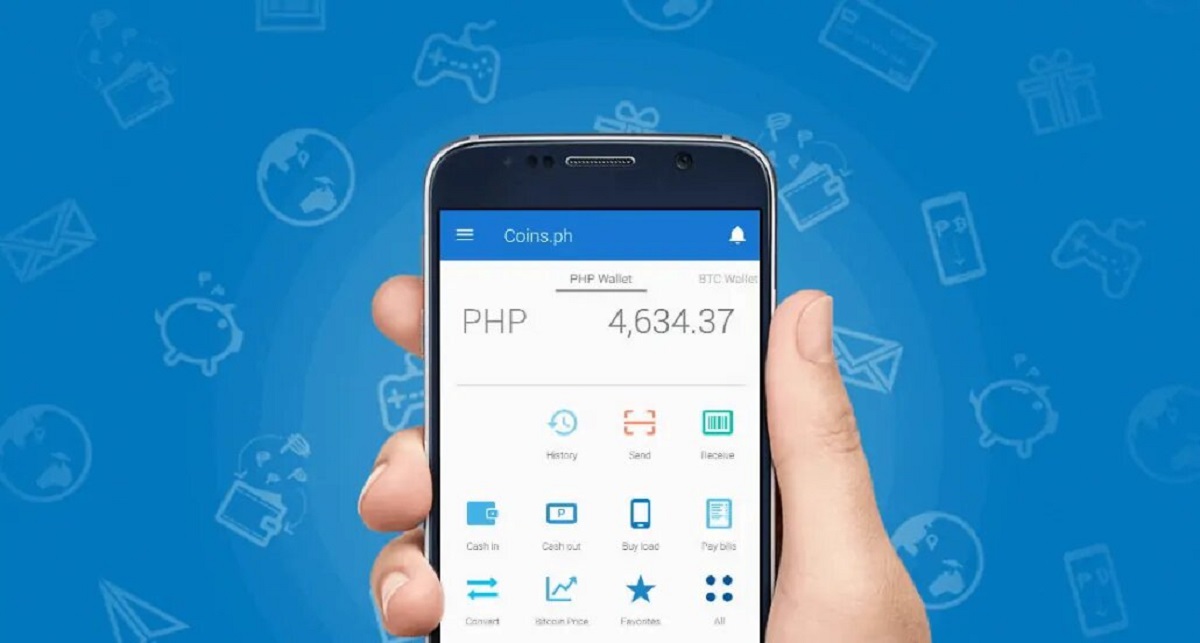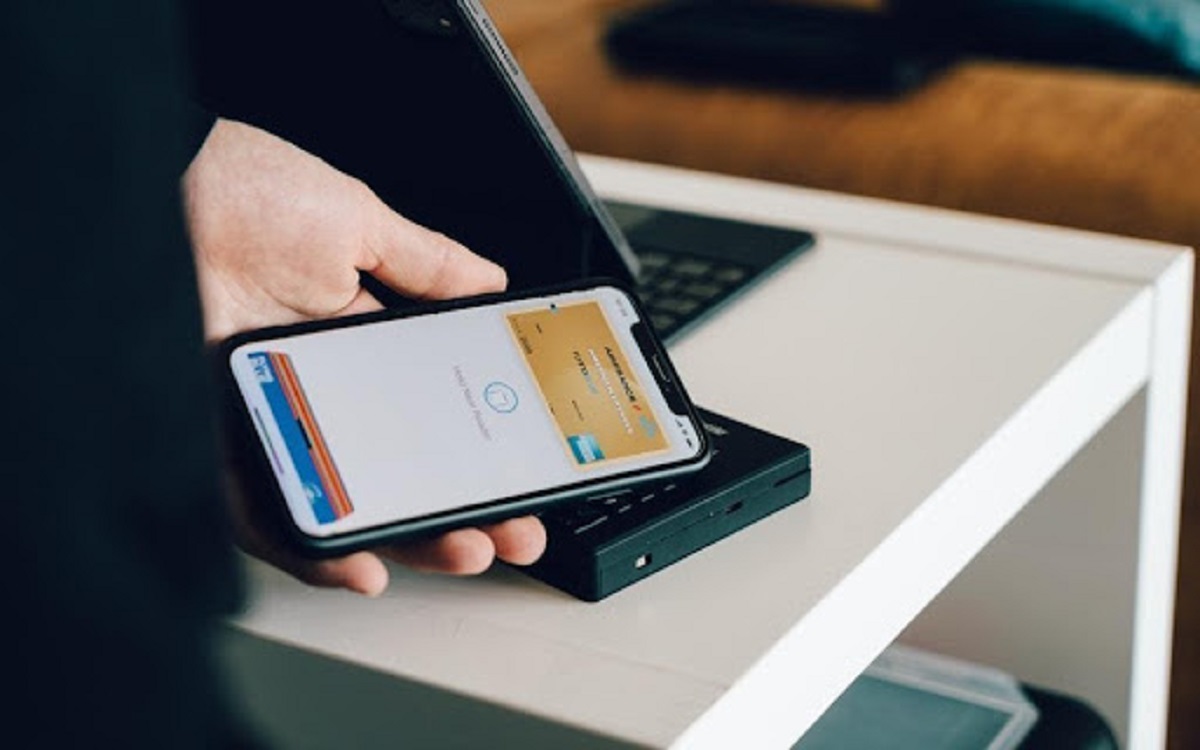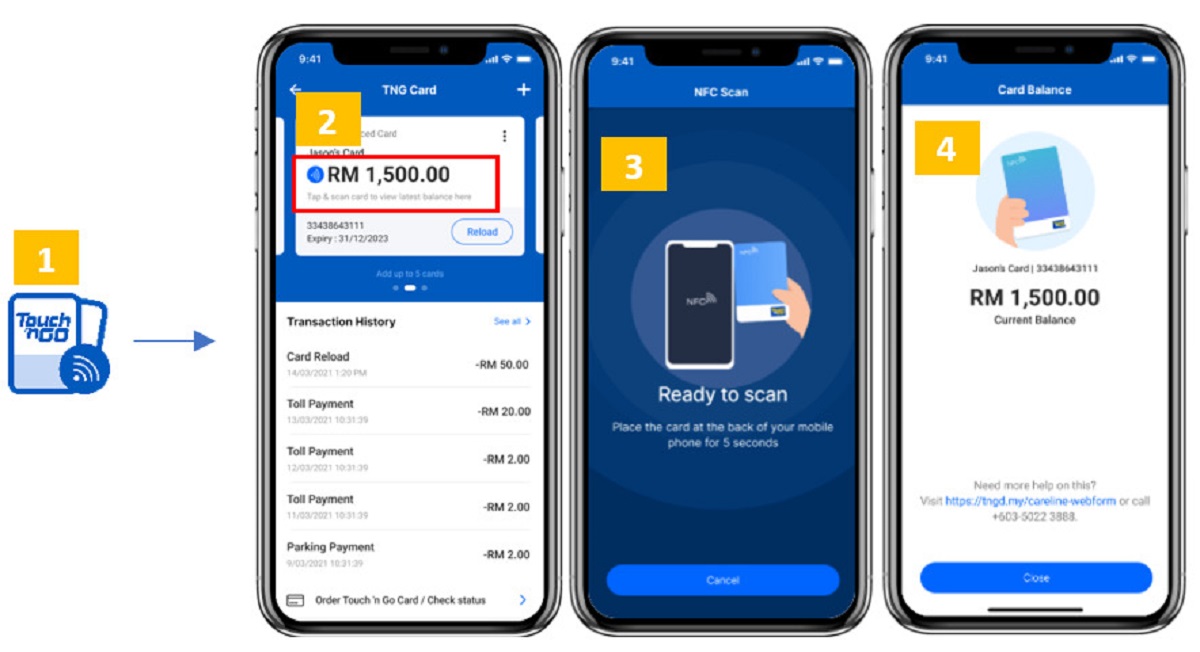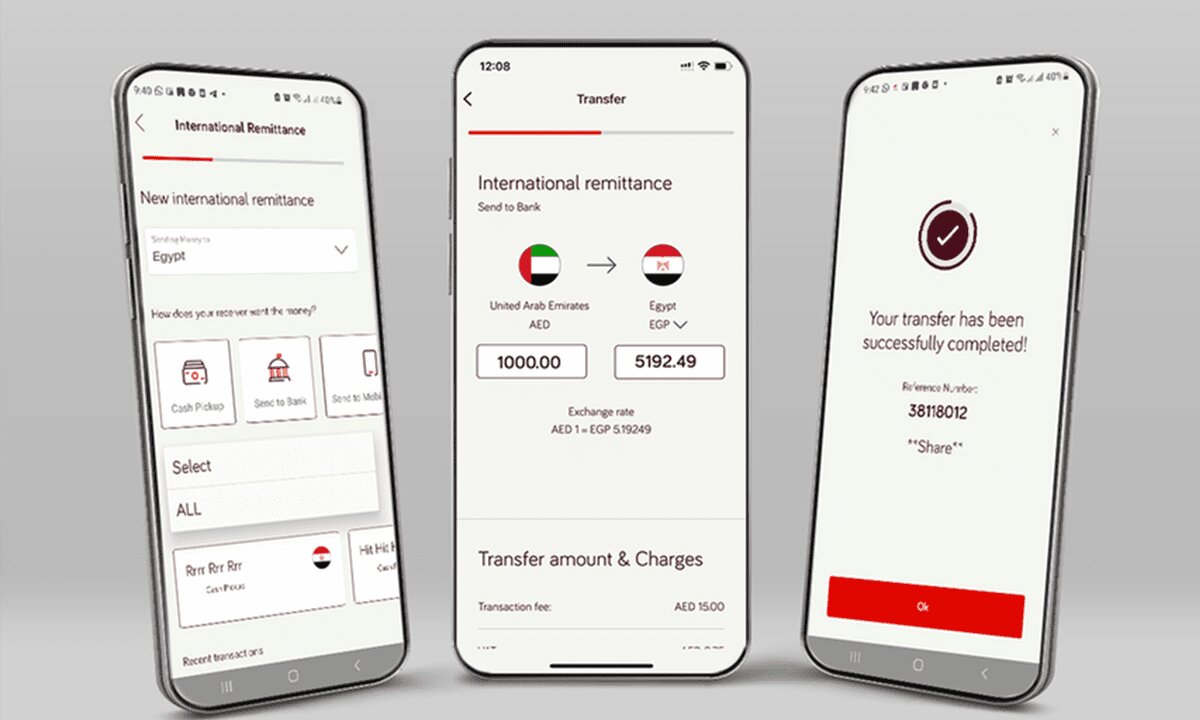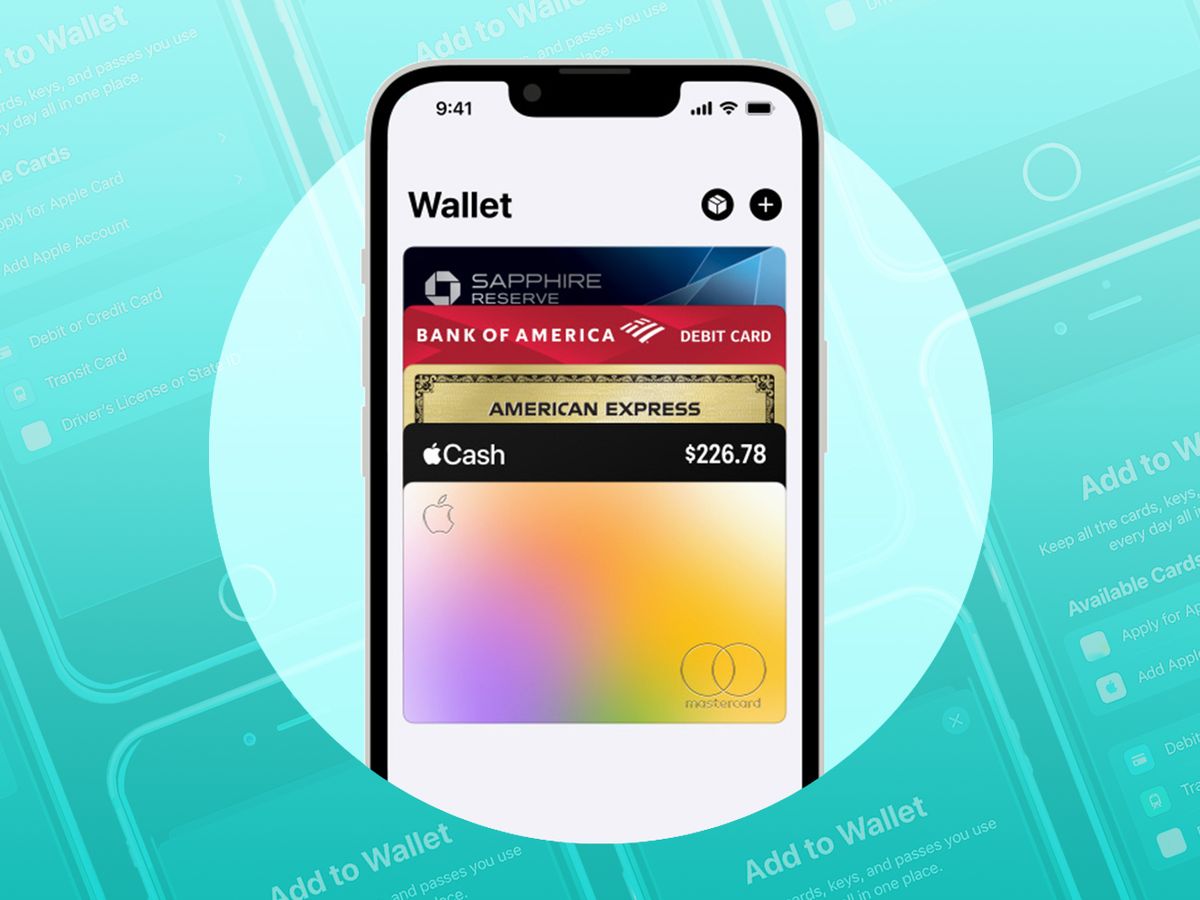Introduction
Welcome to the digital age, where cash is no longer king and online payments have become the norm. With the rise of technology, a new method of payment has emerged – the electronic wallet, more commonly known as an e-wallet. This digital alternative to physical wallets is revolutionizing the way we transact and manage our money.
An e-wallet is a virtual container that allows users to store, manage, and transfer funds electronically. It eliminates the need for carrying physical cash and provides a convenient way to make payments for goods and services. Whether you’re shopping online, paying bills, or splitting the check with friends, an e-wallet offers a secure and hassle-free solution.
So how exactly does an e-wallet work? It’s simple. Once you set up an account with an e-wallet provider, you can add funds from your bank account, credit card, or even receive direct deposits. This money is then securely stored within the e-wallet, ready to be used whenever you need it.
When it comes to making a payment, an e-wallet can be used at participating merchants by scanning a QR code, entering a unique payment code, or simply tapping your smartphone or smartwatch on a compatible terminal. The transaction details are encrypted and processed securely, ensuring your financial information remains protected.
Now that you have a brief understanding of e-wallets, let’s delve deeper into how to set up an e-wallet account, add funds, choose the right provider, and make payments. We’ll also explore the benefits of using an e-wallet and touch on the important security considerations you should keep in mind for a worry-free digital payment experience. With an e-wallet, you’ll have the convenience of a digital wallet and the peace of mind that your financial information is safe.
What is an E-Wallet?
An e-wallet, also known as a digital wallet or mobile wallet, is a virtual container that allows users to store and manage their financial information securely. It serves as a digital counterpart to a physical wallet, enabling users to make payments, store loyalty cards, and even store identification documents, all within a smartphone application or a dedicated online platform.
Unlike traditional wallets, which hold physical cash and cards, an e-wallet securely stores digital representations of these items. This means that instead of manually handling and counting cash, you can simply access your e-wallet app and make a payment with just a few taps on your smartphone.
One of the main advantages of an e-wallet is its versatility. It can support multiple payment methods, including credit cards, debit cards, bank transfers, and even cryptocurrencies. This flexibility allows users to choose their preferred payment method and seamlessly switch between them based on their needs and preferences.
Another key feature of an e-wallet is its integration with digital payment systems. Many e-wallets are compatible with contactless payment technologies such as Near Field Communication (NFC), allowing users to make quick and convenient payments by simply tapping their smartphones on compatible payment terminals.
In addition to making payments, e-wallets often offer additional functionalities such as loyalty card storage, ticket purchases, and even peer-to-peer money transfers. By consolidating these features into a single platform, e-wallets simplify the transaction process and provide users with a seamless and efficient payment experience.
E-wallets are not limited to smartphones; they can also be accessed through other devices such as tablets, smartwatches, or even web browsers. This provides users with flexibility and convenience, allowing them to access and manage their digital wallet from their preferred device.
Overall, e-wallets have transformed the way we handle payments and manage our financial information. By offering a secure and convenient platform for digital transactions, e-wallets have become an essential tool in our increasingly cashless society.
How Does an E-Wallet Work?
An e-wallet works by securely storing and managing your financial information, allowing you to make payments and manage your funds with ease. The process can be broken down into a few key steps:
- Account Creation: To start using an e-wallet, you need to create an account with a reputable e-wallet provider. This typically involves providing your personal information, such as your name, email address, and sometimes even a valid identification document. This information is used to verify your identity and protect your account from unauthorized access.
- Fund Addition: Once your account is set up, you can start adding funds to your e-wallet. E-wallets offer various ways to fund your account, such as linking your bank account or credit card. Some e-wallets also allow you to receive funds from other users, transfer money from your existing e-wallet balance, or load cash at designated retail locations.
- Payment Process: When making a payment with an e-wallet, you can choose from different methods depending on the merchant’s accepted modes of payment. Common methods include scanning a QR code, entering a unique payment code, or tapping your smartphone on a contactless payment terminal. These methods initiate the transaction process, securely transmitting the payment details to complete the purchase.
- Transaction Security: E-wallets prioritize the security of your financial information. Most e-wallets use encryption technology to protect your account and payment details. Additionally, mobile devices often have biometric security features like fingerprint or facial recognition, adding an extra layer of protection. Always ensure that you keep your e-wallet app updated and set a strong PIN or passcode to prevent unauthorized access.
- Transaction History and Management: E-wallets provide you with a transaction history that allows you to track your spending, view past payments, and manage your funds. You can easily review your transaction details, organize your expenses, and even export reports for budgeting purposes. Some e-wallets also offer features like bill payment reminders and budgeting tools to help you stay on top of your financial management.
Overall, e-wallets simplify the payment process by eliminating the need to carry physical cash or cards. They offer a secure and convenient way to make transactions, manage funds, and track your financial activities, providing a seamless and efficient experience for users.
Setting Up an E-Wallet Account
Setting up an e-wallet account is a straightforward process that allows you to start enjoying the benefits of digital payments. Here are the steps to follow:
- Select an E-Wallet Provider: Research and choose a reputable e-wallet provider that aligns with your needs and preferences. Consider factors such as security measures, supported payment methods, user-friendly interface, and availability in your region.
- Download the App: Once you’ve chosen an e-wallet provider, download their mobile app from your device’s app store. Alternatively, some e-wallets may offer web-based access if a dedicated mobile app isn’t available.
- Create an Account: Open the app and follow the prompts to create a new account. You’ll typically be asked to provide basic personal information such as your name, email address, and sometimes your phone number. Ensure that you use a strong and unique password to protect your account.
- Identity Verification: Depending on the e-wallet provider’s requirements, you may need to verify your identity. This may involve submitting identification documents such as a passport or driver’s license. The verification process helps protect your account and ensures compliance with regulatory measures.
- Link Your Bank Account or Card: To add funds to your e-wallet, you’ll need to link your bank account or credit/debit card. Follow the instructions provided by the e-wallet app to securely connect your financial account. This step may require providing the account details or going through an authentication process.
- Set Up Security Measures: Enable additional security measures for your e-wallet account to safeguard your funds. These may include setting up a PIN, passphrase, or biometric authentication like fingerprint or facial recognition. Strong security measures add an extra layer of protection to your account.
- Explore Additional Features: Once your e-wallet account is set up, take some time to explore the additional features offered by the provider. These may include loyalty card storage, gift card redemption, or even peer-to-peer money transfers. Familiarize yourself with the app’s functionalities to make the most of your e-wallet experience.
Remember to keep your e-wallet app updated to benefit from new features and security enhancements. Always exercise caution and follow best practices, such as keeping your device secure and avoiding sharing sensitive information. With your e-wallet account set up, you’re now ready to add funds and start making secure and convenient digital payments.
Adding Funds to Your E-Wallet
Adding funds to your e-wallet is a simple process that enables you to have money available for making payments and transactions. Here’s how you can add funds to your e-wallet:
- Link a Bank Account: Many e-wallets allow you to link your bank account directly to your e-wallet. To do this, go to the settings or account section of your e-wallet app and select the option to add a bank account. Follow the instructions provided by the app to securely connect your bank account. Once linked, you can transfer funds between your bank account and your e-wallet whenever you need to.
- Connect a Debit or Credit Card: Another way to add funds to your e-wallet is by linking a debit or credit card. In the settings or payment options section of your e-wallet app, look for the option to add a card. Enter the required card information, such as the card number, expiration date, and CVV code. Once connected, you can use the linked card to top up your e-wallet balance whenever necessary.
- Receive Payments: If you’re expecting to receive money from others, some e-wallets allow you to receive funds directly into your e-wallet. You can share your e-wallet ID or a payment link with the person sending you money, and they can transfer the funds to your e-wallet. This can be useful for receiving payments from friends, family, or clients.
- Load Cash at Retail Locations: Certain e-wallet providers have partnerships with retail locations where you can load cash onto your e-wallet. Simply visit one of these authorized locations, hand over the cash, and provide the necessary details of your e-wallet account. The staff will assist you in completing the transaction, and the loaded amount will be added to your e-wallet balance.
- Transfer from Another E-Wallet: If you have funds in another e-wallet, some providers allow you to transfer money between e-wallet accounts. Check with your e-wallet provider if they support this feature and follow the instructions to initiate the transfer.
It’s important to note that some e-wallets may charge fees or have certain limits on adding funds. Be sure to review the terms and conditions of your e-wallet provider to understand any applicable fees or limitations. Additionally, always ensure that you’re adding funds from legitimate sources and take necessary precautions to protect your personal and financial information.
By adding funds to your e-wallet, you’ll have a balance available for making purchases, paying bills, and conducting other financial transactions securely and conveniently.
Choosing the Right E-Wallet Provider
When it comes to choosing an e-wallet provider, it’s essential to consider several factors to ensure that you select the right one for your needs. Here are some key considerations to keep in mind:
- Security: The security of your financial information should be a top priority. Look for e-wallet providers that employ robust security measures, such as encryption, two-factor authentication, and biometric authentication. Check for any security certifications or endorsements that the provider may have received to ensure they prioritize the protection of your personal and financial data.
- Supported Payment Methods: Consider the types of payment methods supported by the e-wallet provider. Ensure that the provider allows you to link your bank account, debit card, or credit card, depending on your preferred payment method. If you plan to use specific payment methods like cryptocurrency, check if the e-wallet supports that as well.
- User-Friendly Interface: An intuitive and user-friendly interface can greatly enhance your e-wallet experience. Look for an app or platform that is easy to navigate, understand, and use. A clean design, clear instructions, and quick access to essential features can make managing your e-wallet hassle-free.
- Availability and Compatibility: Ensure that the e-wallet provider is available in your region and compatible with your device. Check if the app is available for your specific operating system (iOS, Android, etc.) and if it supports the features you require, such as contactless payment or compatibility with wearable devices like smartwatches.
- Additional Features: Consider any additional features offered by the e-wallet provider. Some e-wallets may offer loyalty card storage, integration with popular merchants, rewards programs, or budgeting tools. Assess these features to see if they align with your needs and can enhance your overall digital payment experience.
- Customer Support: Good customer support is crucial in case you encounter any issues or have questions regarding your e-wallet. Check if the provider offers multiple support channels such as live chat, email, or phone, and whether their support team is responsive and knowledgeable.
- Reviews and Reputation: Before making a decision, read reviews and testimonials from other users of the e-wallet provider. This can provide valuable insights into the user experience, security measures, and overall reliability of the service. Pay attention to both positive and negative aspects to make an informed decision.
Take your time to compare different e-wallet providers based on these factors. Consider your personal preferences, the features that matter most to you, and the reputation of the providers. By choosing the right e-wallet provider, you can enjoy a seamless, secure, and convenient digital payment experience.
Making a Payment with an E-Wallet
Making a payment with an e-wallet is a quick, convenient, and secure process. Here’s a step-by-step guide on how to make a payment using your e-wallet:
- Ensure Sufficient Funds: Before making a payment, ensure that you have sufficient funds available in your e-wallet. If not, you may need to add funds using one of the methods outlined in the previous section.
- Select Payment Method: Depending on the specific e-wallet and the merchant’s payment options, choose the appropriate payment method. This could be scanning a QR code, entering a unique payment code, or tapping your smartphone on a contactless payment terminal.
- Authorize Payment: Follow the instructions provided by the merchant to authorize the payment. This may involve confirming the payment amount and verifying your identity using your e-wallet’s security features, such as a PIN, fingerprint, or facial recognition.
- Transaction Processing: Once you’ve authorized the payment, the transaction details are securely transmitted to the merchant’s payment system. The e-wallet and the merchant’s system communicate to validate the payment and ensure the transaction is secure.
- Confirmation: After the payment is processed successfully, you’ll receive a confirmation message or receipt on your e-wallet app. This provides you with proof of the transaction and serves as a record for future reference.
- Review Transaction History: It’s a good practice to regularly review your e-wallet transaction history. This allows you to keep track of your payments, monitor your spending, and identify any discrepancies or unauthorized transactions.
- Protect Your Information: During the payment process, it’s important to exercise caution and protect your personal and financial information. Avoid sharing sensitive details like your e-wallet password or PIN with anyone and ensure that you transact with trusted merchants or individuals.
Making payments with an e-wallet offers the advantages of speed, convenience, and security. It eliminates the need to carry physical cash or multiple cards, simplifying the payment process and providing a seamless digital experience.
Remember to check the payment limits and any applicable fees associated with your e-wallet, as these may vary depending on the provider and the specific transaction. By using your e-wallet for payments, you can enjoy the flexibility and convenience of digital transactions in various settings, including online shopping, retail stores, restaurants, and more.
Benefits of Using an E-Wallet
Using an e-wallet offers numerous benefits that enhance the convenience, security, and efficiency of your day-to-day financial transactions. Here are some of the key advantages of using an e-wallet:
- Convenience: With an e-wallet, you no longer need to carry physical cash or numerous cards. Your smartphone or other electronic devices become your virtual wallet, allowing you to make payments with just a few taps or scans. This convenience is especially valuable when you’re on the go or shopping online.
- Fast and Efficient: E-wallet transactions are typically faster compared to traditional payment methods. Whether you’re making a contactless payment or completing an online purchase, the process is streamlined and reduces the need for manual data entry. This saves you time and eliminates potential errors.
- Secure Transactions: E-wallets prioritize the security of your financial information. They use encryption technology to protect your account details, while additional security features like biometric authentication add an extra layer of protection. With built-in security measures, e-wallets provide a safe way to make digital payments.
- Easy Budgeting: E-wallets often include features that help you manage and track your spending. You can view transaction histories, categorize expenses, and even set budget limits. This allows you to have a better overview of your finances and make informed decisions about your spending habits.
- Rewards and Discounts: Many e-wallets offer loyalty programs, discounts, and cashback rewards for using their services. By consistently using your e-wallet for payments, you can earn points, enjoy exclusive offers, and maximize your savings.
- Flexibility in Payment Options: E-wallets support various payment methods, including credit cards, debit cards, bank transfers, and even cryptocurrencies. You have the flexibility to choose the payment method that suits your needs and preferences, making it convenient to manage your finances.
- Environmental Impact: By using an e-wallet, you contribute to reducing waste. The need for paper receipts and excessive printing of physical documents is minimized. This shift towards digital payments aligns with sustainable practices and helps in conserving resources.
- Integration with Other Services: E-wallets often integrate with other services and platforms, making your financial management more seamless. For example, they may integrate with transportation services, allowing you to pay for rides with your e-wallet. Integration with online merchants can simplify and streamline the checkout process.
By utilizing an e-wallet, you can enjoy these benefits and experience enhanced convenience, security, and control over your financial transactions. The increasing popularity of e-wallets indicates a shift towards a cashless society, where digital payments are becoming the preferred method for individuals and businesses alike.
Security Considerations When Using an E-Wallet
While e-wallets offer convenience and efficiency, it’s important to prioritize the security of your financial information when using these digital payment platforms. Here are some key security considerations to keep in mind:
- Choose a Reliable E-Wallet Provider: Select an e-wallet provider with a strong reputation for security. Research their security measures, certifications, and reviews to ensure they prioritize protecting your personal and financial data.
- Enable Strong Authentication: Utilize the security features provided by your e-wallet, such as PIN codes, passphrases, or biometric authentication like fingerprint or facial recognition. These features add an extra layer of protection and ensure that only authorized users can access your e-wallet.
- Keep Software Updated: Regularly update your e-wallet app to ensure you have the latest security patches. Install updates promptly as they often address known vulnerabilities and enhance the overall security of the app.
- Use Secure Networks: Make sure to use secure and trusted networks when accessing your e-wallet. Avoid using public Wi-Fi networks, as they may pose security risks. Instead, use a secure, password-protected network or cellular data to conduct your e-wallet transactions.
- Be Wary of Phishing Attacks: Phishing attempts may try to trick you into revealing your e-wallet login credentials or other sensitive information. Always be cautious of unsolicited emails, messages, or calls asking for personal details. Avoid clicking on suspicious links and only provide information through trusted channels.
- Review Transaction Activity Regularly: Take the time to review your e-wallet transaction history regularly. Check for any unauthorized transactions or suspicious activity. Report any discrepancies to your e-wallet provider immediately.
- Protect Your Device: Keep your smartphone or other electronic devices protected with a lock screen PIN, password, or biometric authentication. This prevents unauthorized access to your e-wallet if your device is lost or stolen.
- Securely Dispose of Old Devices: If you plan to upgrade or dispose of an old device, ensure that all personal and financial information associated with your e-wallet is securely erased. Consult the device manufacturer’s instructions or use specialized software to remove any sensitive data.
- Be Cautious of Public Displays: When making a payment using your e-wallet in public, shield your device’s screen to prevent others from viewing sensitive information. Exercise caution to avoid inadvertently revealing your e-wallet balance or other private details.
- Report Suspicious Activity: If you notice any suspicious activity or believe that your e-wallet account may have been compromised, contact your e-wallet provider immediately. They can help you investigate the issue and take appropriate measures to secure your account.
By following these security considerations and best practices, you can minimize the risk of unauthorized access to your e-wallet and ensure a secure digital payment experience. Being vigilant and proactive in protecting your e-wallet account is crucial to maintaining the security of your financial information.
Conclusion
E-wallets have revolutionized the way we make payments and manage our finances in today’s digital age. These virtual wallets offer a convenient, secure, and efficient alternative to traditional payment methods. With just a few taps on your smartphone, you can easily make purchases, transfer funds, and track your transactions.
Throughout this article, we have explored the various aspects of using an e-wallet, from understanding what it is and how it works to setting up an account, adding funds, and making payments. We have also discussed the benefits of using an e-wallet, such as convenience, speed, security, and integration with other services. Additionally, we have highlighted the importance of considering security measures and following best practices to ensure the protection of your financial information.
As the digital payment landscape continues to evolve, the popularity of e-wallets is expected to grow. However, it’s crucial to choose the right e-wallet provider, prioritize security, and stay vigilant against potential threats. By doing so, you can reap the benefits of e-wallets while enjoying peace of mind regarding the safety of your financial transactions.
So, whether you’re shopping online, paying bills, or splitting expenses with friends, consider utilizing an e-wallet for a quick, secure, and hassle-free payment experience. Embrace the digital revolution and join the cashless society with the convenience of an e-wallet.









